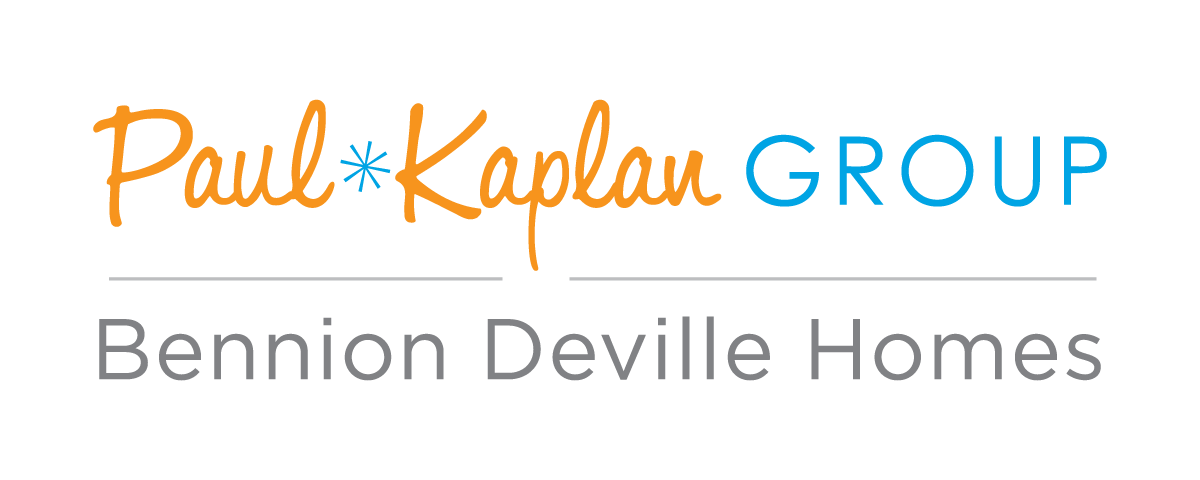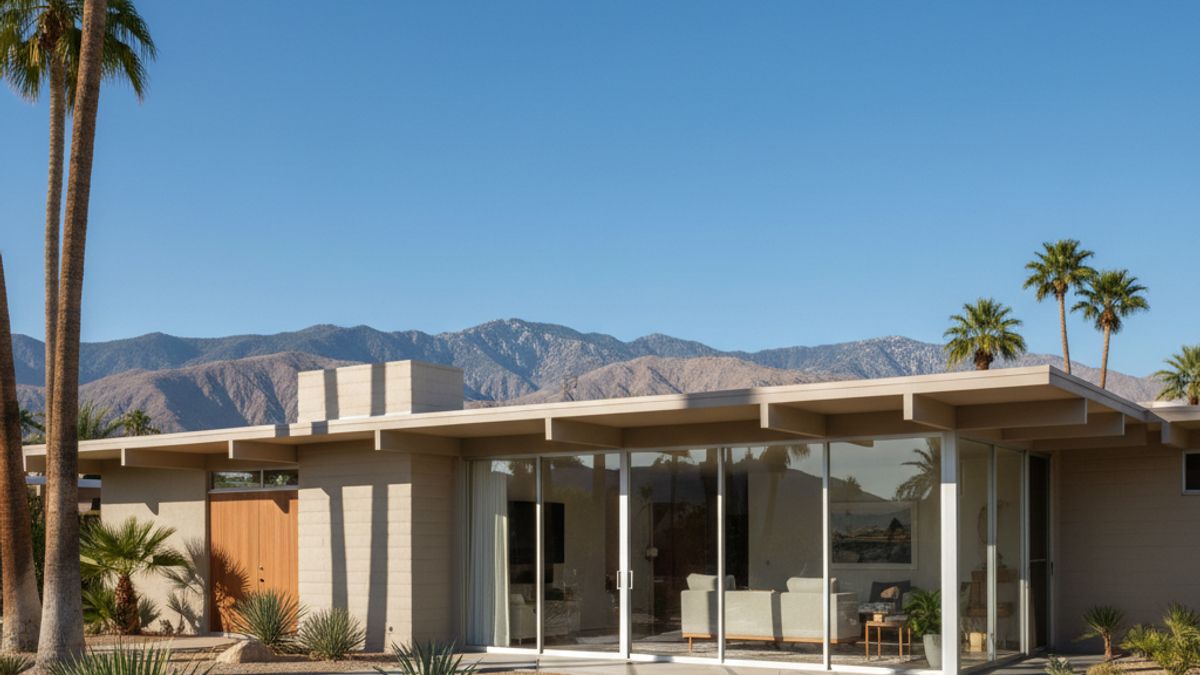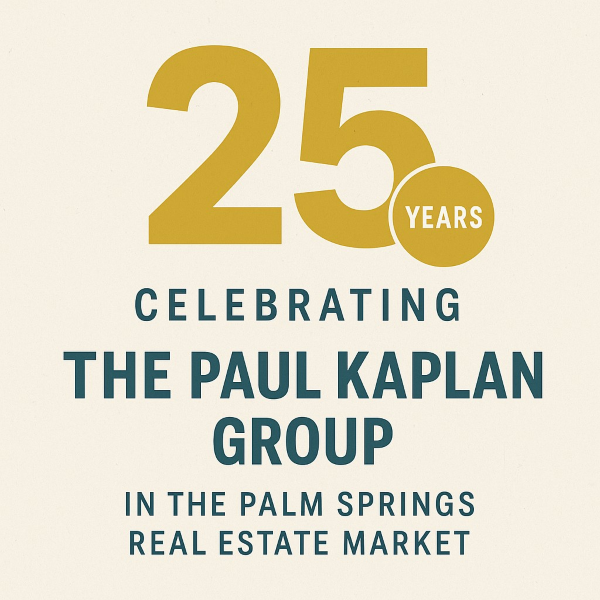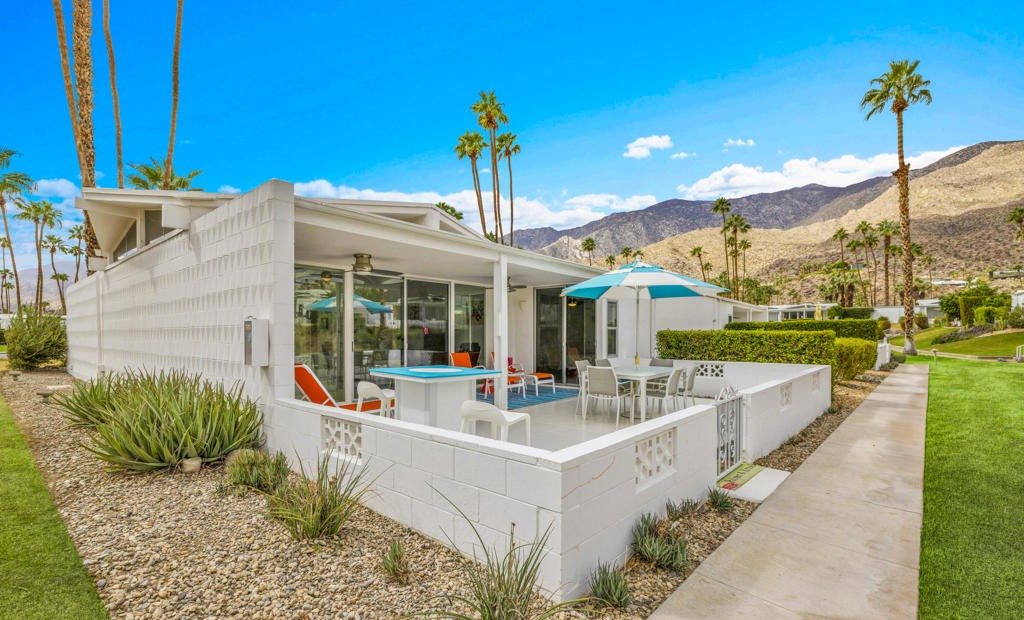Walk down any palm-lined street, and it becomes clear why homes in Palm Springs hold such appeal. Mid-century modern gems flash clean rooflines and floor-to-ceiling glass, while Spanish cottages hide behind bougainvillea and hand-painted tiles
One block may offer a sleek downtown condo near brunch spots; another reveals a hillside retreat where the pool meets the ridgeline. Different as they are, these addresses share an easy embrace of sunshine, indoor-outdoor living, and the relaxed confidence that defines this desert city.
What is the Average Home Price in Palm Springs?
Fresh August 2025 sales data puts the median sale price for Palm Springs homes at roughly $630,000, about a 2% lift from the same month last year. That figure covers everything from polished mid-century modern icons downtown to Spanish villas tucked near the canyon trails, giving shoppers a realistic benchmark when scouting homes for sale in Palm Springs.
Prices do swing by pocket and property type. A compact condo close to the arts district often closes below the median, while a renovated, pool-ready retreat on a larger lot, think clean lines, mountain backdrop, and seamless indoor-outdoor flow, can sit well above it.
Still, the city’s median number offers a useful starting point for anyone comparing CA real estate markets before diving deeper into neighborhood specifics.
Is it a Buyer or Seller’s Market in Palm Springs?
Summer 2025 numbers paint a picture of balance. The average Palm Springs listing now lingers for about 119 days before closing, a far cry from the lightning-fast deals of 2021. That breathing room lets shoppers weigh offers and compare homes for sale in Palm Springs without the pressure of instant decisions, yet sellers still enjoy steady foot traffic if a property is priced right and photographed well.
Roughly three out of ten properties are still topping their list price, but the rest are negotiating down to meet the market. In practice, neither buyers nor sellers dominate. Buyers have leverage to request repairs or closing credits, while sellers who showcase mid-century charm, pristine desert landscaping, or a seamless indoor-outdoor floor plan can secure strong results.
It feels less like an all-in sprint and more like a friendly match where preparation, realistic pricing, and polished presentation guide the outcome.
What are the Best Neighborhoods in Palm Springs?
Downtown, Movie Colony, and Vista Las Palmas form the mid-century core, packed with Palm Springs homes that flaunt clean lines and floor-to-ceiling glass. A stroll can take you from an untouched modernist gem to a fully renovated showpiece, all within walking distance of galleries, cafés, and pocket parks.
Head south to Deepwell Estates, Tahquitz River Estates, and Indian Canyons for larger lots and resort calm. Spanish villas and contemporary builds share streets lined with desert landscaping; most backyards hide a pool or tiled patio that frames the San Jacinto peaks.
Craving a gated setting? Andreas Hills and the enclaves near Sunnylands deliver custom estates, often 3,000-plus sq ft, with open-concept interiors, den flex spaces, and panoramic valley views. HOA fees here typically cover manicured grounds, clubhouses, and 24-hour security, making it easy to lock up and enjoy the desert on your own schedule.
What Should You Know About the Palm Springs Lifestyle?
Palm Springs life centers on sunlight, outdoor rooms, and a desert rhythm that tilts toward mornings and evenings during summer. Expect yards designed for low water use and mature palm or native plantings; many homes showcase tiled patios, gas fireplaces on covered patios, and layouts that prioritize airflow and shading. The city also draws people who prize architecture, with mid-century modern homes and contemporary custom properties both common.
Seasonality matters. Winters bring a denser market of visitors and seasonal residents, and summers can cool activity but introduce maintenance concerns like HVAC loads and exterior upkeep.
If you value nearby amenities, Palm Springs keeps a compact core with parks, galleries, and a handful of notable shopping corridors, while the broader Coachella Valley supplies additional golf, dining, and cultural options.
What is the Process to Buy a Home in Palm Springs?
Start with preapproval from a lender so you know the mortgage range for the house types you are targeting.
Then choose an agent experienced in Palm Springs real estate who can set up tours of listings that match your priorities, whether that is a mid-century modern home with original architectural details, a fully renovated Spanish villa with granite countertops and tile floors, or a contemporary custom property with an open floor plan and indoor-outdoor sliders.
During contract negotiation, expect to handle inspections, appraisal, and possibly HOA document review if the listing is in a community. In a classic mid-century home, make sure the HVAC, electrical, and original windows still run smoothly. In a desert villa, turn that scrutiny to the pool gear and irrigation lines to confirm they’re in good shape.
Closing timelines follow standard California procedures, but local escrow practices and HOA document turnarounds can affect the schedule.
What are Some Tips for Buying a Home in Palm Springs?
See each property at different times of day to judge sun exposure, mountain views, and how the floor plan handles heat. Prioritize HVAC capacity, insulation, and window quality on older mid-century listings, and factor in the cost to update kitchens or bathrooms if you are targeting a fixer or a property that needs modernization. Mentioned amenities like a gas fireplace, tennis courts, or proximity to golf will affect value differently depending on the neighborhood and buyer demand.
If you are interested in purchasing a renovated listing, ask for the scope of upgrades and permits; "fully renovated" claims should be backed by receipts and contractor contacts.
Finally, work with an agent who knows how to read local comps by neighborhood block, not only by city, because listing and sold prices move fast between pockets with different architecture and lot sizes.
FAQs About Buying a Home in Palm Springs, California
What amenities are common in many Palm Springs homes for sale?
Most listings highlight a private pool, shaded patio, and desert-friendly landscaping. Higher-end properties may add outdoor kitchens, gas fire pits, or glass sliders that merge indoor and outdoor space.
How do real estate prices near Palm Springs compare with listings in central Palm Springs, CA?
Homes in nearby spots like Cathedral City or Desert Hot Springs usually list for less than similar addresses downtown. A fully renovated place with a mountain view can close the gap, but most buyers pick up extra square footage for the same budget when they look beyond the city core.
The trade-off is a longer drive for dinner in Palm Canyon or a show at the convention center.
Are HOA fees typical for Palm Springs homes that advertise resort-style amenities?
They are. Gated neighborhoods and condo complexes often collect monthly dues to keep pools, clubhouses, and common landscaping in shape. Before moving ahead, check the HOA budget and reserve study so you know how those fees may grow over time.
Do mid-century modern homes require special upkeep in the CA desert climate?
Flat or low-pitch roofs should be inspected for ponding, and original single-pane windows may warrant upgrading for energy efficiency. Regular HVAC service is key because summer heat puts extra load on cooling systems.
Is new-build real estate near Palm Springs readily available?
New construction pops up in pockets on the valley’s outskirts, but the central Palm Springs supply is limited due to mature neighborhoods and lot scarcity. Buyers seeking brand-new builds often look toward planned communities east of town where larger parcels remain.






